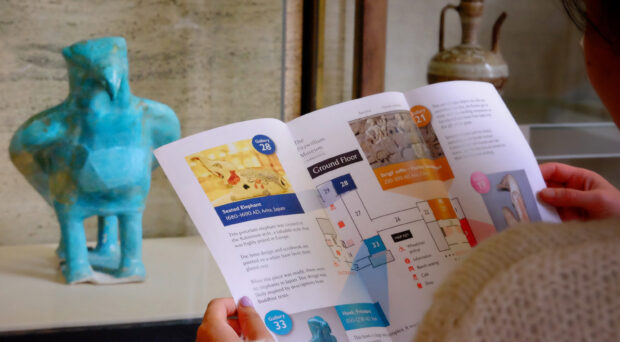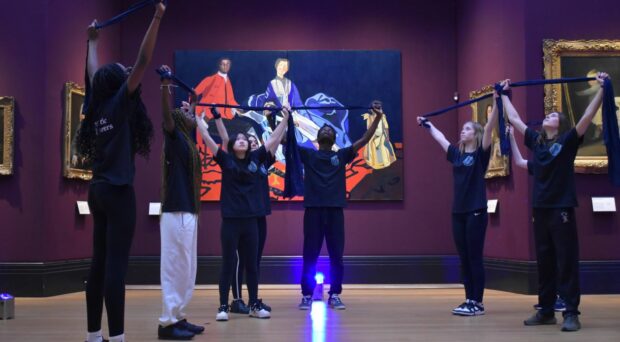To understand how to provide a great family welcome at the Fitzwilliam Museum, we went straight to the experts: babies, young children and their parents. Using a range of creative research tools, both inside the museum and during outreach sessions in the local community, we worked together to explore what it means to feel welcome.
The Family Welcome Project
The Family Welcome Project used participatory research methods to understand what museums offer babies, young children, and the people who care for them.
The project builds on previous research projects focused on young children’s museum experiences. We have worked with early years settings through our Nursery in Residence and Playgroup in Residence projects, and collaborated with families to think about ways into the collection using picture books, music, and design-led thinking.
This time, we wanted to explore ways of supporting families to research alongside us. Instead of just a couple of researchers, we now had more than 30 curious minds on the case: interacting, documenting and reflecting on their museum encounters.
What we did
Sally McGivern, Child and Family Worker in North Cambridge, helped us recruit 15 families to take part in the project. The families had children ranging in age from three months to three years old, and there were 10 different languages spoken across the group.
Families visited the Fitzwilliam Museum five times and were offered simple prompts to enable them to explore and record their experiences independently. The family co-researchers were given cameras to take their own photographs, and created research journals including collage, drawing and written memories which were all analysed alongside more traditional fieldnotes.
“Love seeing the things he notices and zones in on and his interactions. Really makes me see things in a different way.” – Parent of a two year old
As well as visits to the Fitzwilliam, each family was given a bursary to undertake a research trip to another site of cultural interest. These included local attractions, London museums, zoos, aquaria, and even some international locations! We provided some training materials for families on ways of observing and recording their children’s engagement and interactions and were fascinated to hear the insights from our co-researchers’ travels.
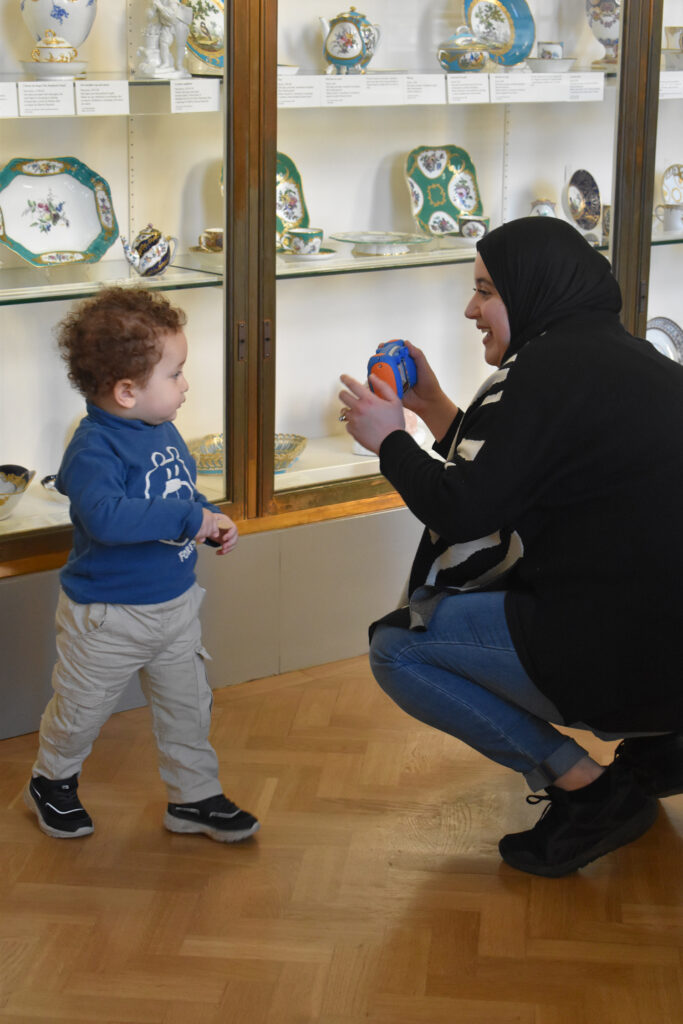
There were two further strands in addition to the action research taking place with the core group of families.
Outreach visits and conversations with families and partner organisations across the city helped us better understand local need and how the Museum is perceived. By talking to families in community settings, many of whom had never visited, we were able to build a picture of the kind of activities they are currently engaging with and consider any barriers to participation they might face.
Finally we wanted the research to build on all the expertise that is already held locally, so we established a monthly cross-departmental working group with colleagues from within the Museum and beyond. This has evolved into an ongoing programme of engagement and training sessions.
“I’m learning a lot about how important texture and sound are to children, and how the Museum supports this even if objects cannot be touched. Other senses as well like atmosphere, vibrations etc. that are different in museums to other places they might go.” – Visitor Experience Host and Working Group Participant
What we found out
1. Young children LOVE the Museum building.
“He is always drawn to the space and scale of the stairs.” – Parent of a two year old
Have you ever spotted a child in a museum staring intently at a light fitting, experimenting with the sound of their feet on wooden floors, or taking their time to crawl up a giant stone staircase, just to come straight back down again? We noticed lots of these tiny interactions between children and the building. Museums offer huge multisensory potential for exploration, and babies and young children can engage with these on their own terms from the earliest age.
2. Our collections create points of connection
“These sculptures of human faces fascinated me! I went back to them again and again.” – Family Journal entry from the perspective of a one year old
We noticed that certain kinds of objects drew families in. These included faces and human figures, animal features, and very large-scale objects.
These offered opportunities for adults and children to have a shared experience focusing on the same object. We know that joint attention and responsive interactions are the key to flourishing from both child development and family wellbeing perspectives. Engaging with collection objects together is a fantastic way for family members to build bonds and feel connected.
This sense of connection also reached beyond the family: social interactions shaped by the Museum and objects helped families feel a sense of community across language and cultural divides.
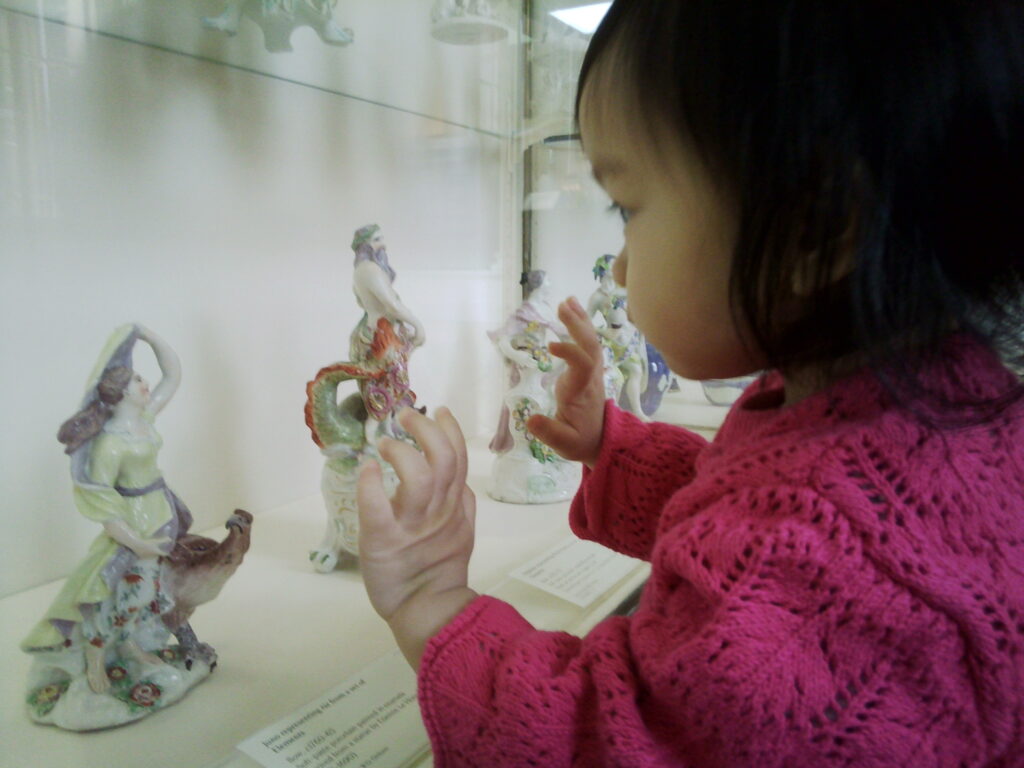
3. Museums help us notice more
“My child’s focus has enabled me to appreciate elements of the museum that normally escape the attention of adults.” – Parent of a two year old
Museums are places where we can slow down, focus, and look more closely than we might in everyday busy family life. This means that they can bring a sense of freedom and time to relax and connect.
Adults in the study found that by having the permission to be curious (especially thinking of themselves as co-researchers), they were able to notice new and surprising things about their children and the museum itself.
This is not just beneficial for individual learning, or for research, but also for children themselves as we have written about in our The Slow Museum article. When parents and other adults pay close and respectful attention in this way, children are learning that their ideas and actions are fascinating, valuable and worthwhile.
4. Museums can feel strange and familiar at the same time – and that’s a good thing!
“We can have time exploring and follow the child… allow[ing] me to look in a different way.” – Parent of a three year old
Museums can be strange places, especially if you are visiting for the first time. Some of our work around Family Welcome has been to reduce this strangeness.
What we found in the study was that families need some familiar points of reference – they need tools to navigate the building and programmes that they use in everyday life for example, and they enjoy the reassurance that comes with people, sights, and sounds that they can recognise.
However, they also appreciated the fact that the Museum is different to other places they go. They enjoyed its unique features as these made it special and generated memories of interactions they would not have anywhere else.
While there was so much positive learning from the research, families also helped us see the challenges they experience in accessing the Museum and all that it offers. The next stage of the project is to understand these in more depth and work together to make the whole Museum more welcoming to all families.
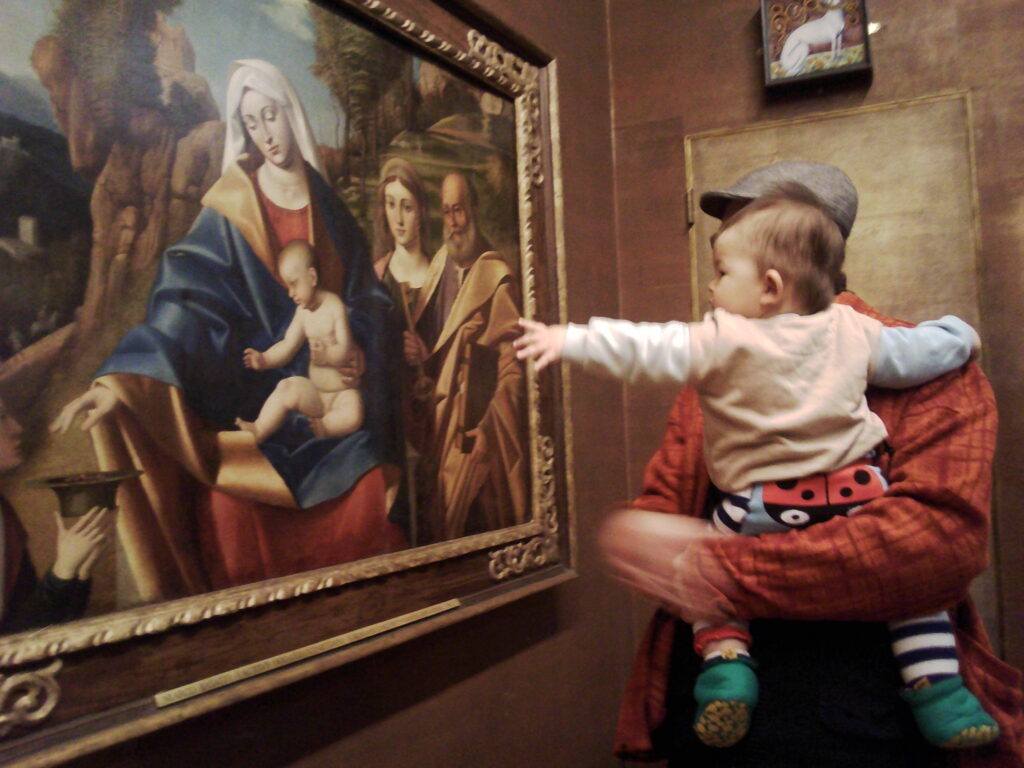
What’s next?
A real advantage of practitioner research is the ability to respond quickly to research findings by evolving and adapting programmes and activities.
Step one in response to the findings of the Family Welcome Project has been to set up Family Friendly Drop In mornings on the first Wednesday of each month. The Drop Ins are free in-gallery events with sensory play resources, simple creative invitations, and lots of friendly faces on hand to chat and support. Excitingly, these are not run by staff alone, but alongside a team of Family Welcome Ambassador Volunteers: parents and children from the research project who are happy to share their ideas and experiences with others.
At the same time, we are working with colleagues to consider how future developments with signage, displays, furniture, and facilities can be informed by what we have learnt. We are establishing a programme of training and engagement for colleagues across departments too so that we can share what we have learnt so far, bring in new perspectives, and have an impact across the organisation and beyond.
You can keep up to date with what is happening with the Early Childhood Research at the Fitzwilliam Museum on the Fitzwilliam Museum website.
Special thanks to all who participated in and supported the project: our Family Welcome Ambassadors, Sally McGivern (North Cambridge Child & Family Centre), community partner organisations, and colleagues at the Fitzwilliam Museum and across the wider sector.





